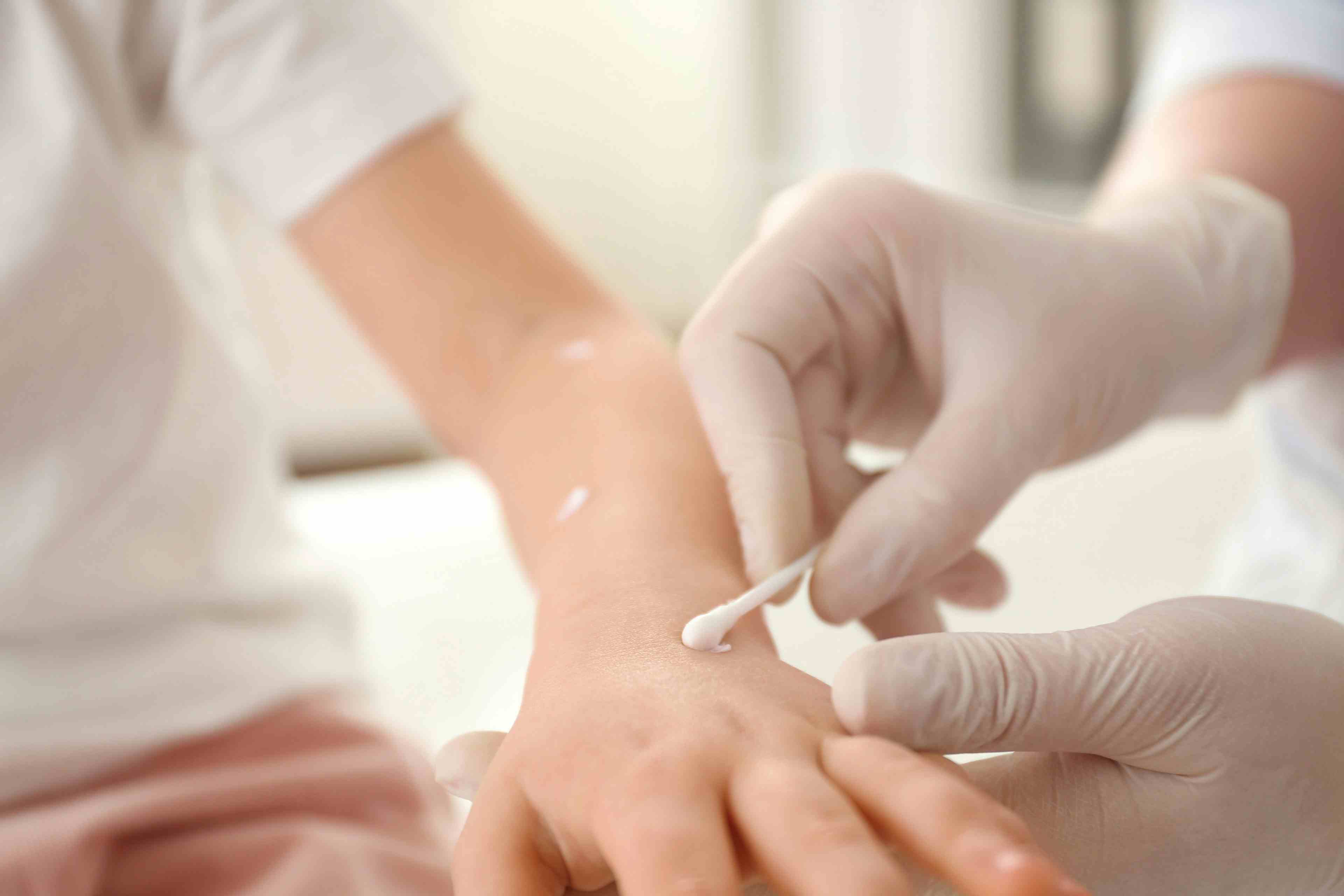- Acne
- Actinic Keratosis
- Aesthetics
- Alopecia
- Atopic Dermatitis
- Buy-and-Bill
- COVID-19
- Case-Based Roundtable
- Chronic Hand Eczema
- Chronic Spontaneous Urticaria
- Drug Watch
- Eczema
- General Dermatology
- Hidradenitis Suppurativa
- Melasma
- NP and PA
- Pediatric Dermatology
- Pigmentary Disorders
- Practice Management
- Precision Medicine and Biologics
- Prurigo Nodularis
- Psoriasis
- Psoriatic Arthritis
- Rare Disease
- Rosacea
- Skin Cancer
- Vitiligo
- Wound Care
Feature
Article
Delving Into NP/PA Perspectives on Emerging Atopic Dermatitis Treatment Options
Explore how surveyed providers perceive current and emerging therapies in the atopic dermatitis.
As more treatments for atopic dermatitis (AD) get approved and garner long-term data, understanding the perspectives of advanced practice providers, including nurse practitioners (NPs) and physician assistants (PAs), is crucial. The latest data from Spherix Global Insights provided a comprehensive look at how these providers perceive current and emerging therapies in the AD market, particularly focusing on their awareness and opinions about new treatments like lebrikizumab (Ebglyss; Eli Lilly) and nemolizumab (Galderma).1
Current Market Dynamics and Provider Awareness
In Q1 2024, a survey of 101 dermatology NPs and PAs revealed key insights into the current market dynamics and provider preferences in the treatment of AD. A significant finding was the level of awareness and familiarity with new treatments among these healthcare professionals. Spherix data showed NPs and PAs reported being less aware of recent market developments compared to dermatologists, with 24% reporting awareness of significant news, and there is a growing interest in new therapeutic options.
The survey highlighted that most NPs and PAs recognize IL-4/13 inhibitors as the top mechanism of action with the greatest potential to treat moderate to severe AD. This is followed closely by JAK inhibitors, which are highly regarded for their efficacy and potential in AD management. Study participants reported the familiarity with specific oral and biologic agents in development remains relatively low among NPs/PAs.
Emerging Treatments: Lebrikizumab and Nemolizumab
Lebrikizumab and nemolizumab are 2 biologics currently in late-stage development that have garnered attention among NPs and PAs. These agents target specific pathways implicated in the inflammatory process of AD, offering potential new treatment avenues for patients with moderate to severe forms of the disease. Earlier this year, Eli Lilly resubmitted a biologics license application (BLA) for lebrikizumab based on data leading to approval in other countries.2 Data from June showed that lebrikizumab maintained EASI 90 responses up to 38 weeks after discontinuation. The FDA’s approval decision is anticipated by the end of 2024.3 The FDA accepted Galderma’s BLA for nemolizumab for the treatment of prurigo nodularis and AD earlier this year.4 Data presented at the 2024 American Academy of Dermatology Annual Meeting in San Diego showed that the drug improved skin lesions and itch through 52 weeks in the OLYMPIA long-term extension study.5
According to the Spherix survey, NPs and PAs are equally interested in both drugs, with nemolizumab slightly edging out lebrikizumab in terms of interest for future prescribing. The enthusiasm for these new treatments is driven by their novel mechanisms of action and promising efficacy data. Nemolizumab, for instance, is noted for its unique targeting of the IL-31 pathway, which is involved in pruritus (itching) and other inflammatory processes in AD. Similarly, lebrikizumab's action on the IL-13 pathway makes it a compelling option for controlling inflammation and reducing disease severity.
Unmet Needs and Future Expectations
The Spherix survey also shed light on the unmet needs in the treatment of AD and what NPs and PAs consider a significant advance over current therapies. A notable finding is that none of the current or pipeline treatments achieve a 50% improvement over placebo in both EASI-75 and IGA 0/1 scores, which NPs and PAs consider the threshold for a significant advance. This indicates a substantial opportunity for new treatments to meet these high expectations and address gaps in the current standard of care.
Providers are particularly interested in therapies that offer better efficacy and safety profiles than existing options. With the increasing availability of biologics and small molecule drugs, there is hope that future treatments will not only control symptoms more effectively but also improve patient adherence and quality of life. Spherix plans to build on this research through 2025 to gain insight on projections in various AD treatments among dermatology NP/PAs.
References
1. Special Topix: Atopic dermatitis NP/PAs (US). Spherix Global Insights. May 2024. Accessed August 6, 2024.
2. Bader K. Eli Lilly resubmits BLA for lebrikizumab for the treatment of moderate to severe AD. Dermatology Times. April 30, 2024. Accessed August 6, 2024. https://www.dermatologytimes.com/view/eli-lilly-resubmits-bla-for-lebrikizumab-for-the-treatment-of-moderate-to-severe-ad
3. Bader K. Lebrikizumab maintains EASI 90 responses up to 38 weeks after discontinuation. Dermatology Times. June 21, 2024. Accessed August 6, 2024. https://www.dermatologytimes.com/view/lebrikizumab-maintains-easi-90-responses-up-to-38-weeks-after-discontinuation
4. Bader K. FDA accepts Galderma’s BLA for nemolizumab for the treatment of prurigo nodularis and atopic dermatitis. Dermatology Times. February 14, 2024. Accessed August 6, 2024. https://www.dermatologytimes.com/view/fda-accepts-galderma-s-bla-for-nemolizumab-for-the-treatment-of-prurigo-nodularis-and-atopic-dermatitis
5. Bader K, Kwatra S. Late-breaking data: long-term safety and efficacy of largest prurigo nodularis study ever conducted. Dermatology Times. March 10, 2024. Accessed August 6, 2024. https://www.dermatologytimes.com/view/late-breaking-data-long-term-safety-and-efficacy-of-largest-prurigo-nodularis-study-ever-conducted
Newsletter
Like what you’re reading? Subscribe to Dermatology Times for weekly updates on therapies, innovations, and real-world practice tips.















